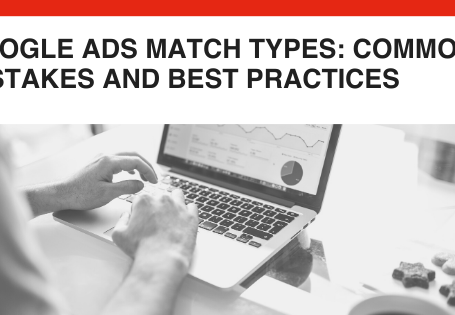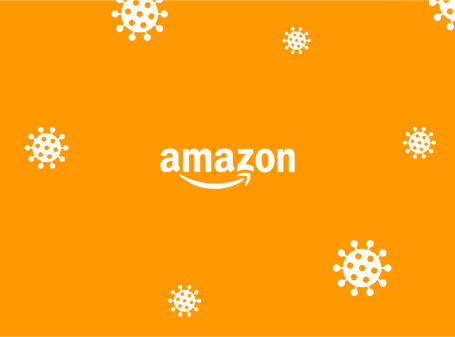Ecommerce Marketing Strategies for the Holiday Season
By: Rank Media

With Black Friday & Cyber Monday right around the corner, it’s that time of year again where digital marketing ninjas and self-proclaimed advertising gurus abandon the concept of sleep to focus on crafting a series of promotional campaigns. All jokes aside, the holiday season that kicks off with American Thanksgiving provides online retailers with an opportunity to recoup a year’s worth of operations costs by generating a meaningful amount of sales. The “make it or break it” season for online retailers means you need to be creative with marketing campaigns as competition ramps up significantly. While it may seem overwhelming and stressful to hitch your success to a volatile shopping period, you don’t need to rely on a sacred scroll or dark magic compendium to execute efficient campaigns. With shoppers actively searching for the best deals, there’s a massive opportunity for retailers of all sizes to capture a share of the money floating around online. Here are some holiday marketing tips ecommerce professionals of all types, ranging from small store owners to the seasoned independent seller pumping out thousands of sales on Amazon.
1) Fund Google’s next robotics venture by splurging on advertising
Whether your advertising budget is $1,500 per month or $50,000, odds are you’ll see a substantial lift in sales by ramping up advertising spend during the holiday season. Unfortunately, if you haven’t ventured into the lucrative (and stressful) world of digital advertising yet, there’s still a chance to capture a share of the market with strategic campaigns.
Google Shopping campaigns are typically the best campaigns to bet on this time of year as online shoppers are on the hunt for the best deals. Consistently checking competitor pricing is vital during this period because product ads with the lowest pricing tend to get the best click-through rates (CTR). Subvert your rivals’ expectations by matching their prices for competitive products and steal traffic away from their website. Scaling campaigns can also be a breeze if your campaigns are structured properly, so make sure to segment your product groups as much as possible. You can then maximize the return on advertising spend (ROAS) for your bestsellers and highest margin products. In addition to regular search and shopping campaigns, utilize dynamic product retargeting to broaden your reach and capture additional traffic.
2) Get all up in that social media marketing stuff
For *any* ecommerce business, there’s no reason NOT to be using Facebook. Not only does it provide the most significant reach of any social network, but its advertising platform also allows you to serve your ads to users on Instagram, Messenger, and Facebook’s Audience Network. The holiday season is the time of year where remarketing budgets for both website traffic and past customers should be increased exponentially, as retaining top of mind awareness during this peak shopping season will be critical. Dedicate a reasonable budget for targeting lookalikes of customers as well, as this can broaden up your targeting. Still, Facebook’s algorithm will focus your ads on users that closely resemble the same people that have purchased from your store, which will spend your advertising dollars efficiently. Yay Facebook!
Facebook and Instagram should receive the bulk of your attention during the holiday season, but don’t be afraid to execute on other social media platforms like Pinterest, Twitter, and Snapchat. While you should be utilizing sharp creatives focused on generating inbound traffic on all social media channels, this is the time to test different advertising styles on some of the less competitive advertising networks. Pinterest, in particular, can prove to be a goldmine for businesses that rely upon highly creative visuals to sell products. And yes, Twitter still exists!
3) Kick it up a notch on The Everything Store
Regardless of whether you’re selling via Seller Central or Vendor Central, the opportunity available on Amazon is ripe during the holiday season. In addition to Prime Day, Amazon tends to spend a significant amount of resources pushing traffic to its site starting a couple of weeks before Black Friday. With online shoppers flocking to Amazon, it’s essential to optimize your products for relevant search terms organically, as well as adding A+ Content or Enhanced Brand Content to push conversions. When it comes to Amazon PPC campaigns, be prepared to scale advertising budgets significantly on important dates, such as Black Friday, Cyber Monday, and Christmas. During this period, you shouldn’t be as adamant about hitting difficult-to-reach ROAS metrics as the primary objective should be to generate a high volume of sales. Not only can you ramp up orders significantly, but you can eventually amass a wealth of positive reviews should new customers be satisfied.

4) Test your newsletter subscribers’ sanity by emailing them every day
While the preceding statement may seem outrageous, it’s a solid recommendation during the holiday season. A report by Campaign Monitor showed that a total of 317 million emails were sent last year on three vital days: Thanksgiving, Black Friday, and Cyber Monday. While most email marketing experts will preach carefully concocted strategies that don’t send your database in a frenzy, being more aggressive is a welcomed approach during the holiday marketing season as mailboxes become war zones. Hammering your list can be the difference between having an “okay” Black Friday and generating enough sales to fund a ride to Mars on Elon Musk’s spaceship (hyperbole intended). It’s also crucial to map out all the different email pathways for users that access your website, whether it’s newsletter signups or customers. Implement a strategic build-up to the Black Friday & Cyber Monday period by giving users a taste of what to expect. Utilize smart functions available within email service providers like Mailchimp, Drip, and Klaviyo to send out automated emails adhering to a set schedule. Black Friday & Cyber Monday is also the time for split-testing, as open rates should increase across the board, allowing you to test different calls to action and creatives.
5) Make users who abandon their cart feel great shame
While the holiday season does mean a substantial increase in ecommerce activity, it also means that prudent shoppers will do their due diligence when comparing products and prices online. As a result, expect a higher percentage of users to abandon their carts as they peruse other websites. If you don’t correctly remarket those users with abandoned cart emails, you may miss out on a boatload of potential orders. In some cases, high shipping costs may cause a break in the checkout process. You’ll also probably have to deal with conservative shoppers having early symptoms of post-purchase dissonance without even submitting payment information, meaning you have an opportunity to throw a hail mary in an attempt to lure them back to your site. In some cases, offering an extra incentive such as a free product (typically a loss leader) or free shipping may bring users back to your website to purchase.
6) Create a sales bonanza on your site with cross-selling and upsell plugins
Depending on the type of ecommerce website you have, it should be relatively easy to implement promotional plugins just before the holidays. For example, Shopify users should have a relatively easy time scanning their plugin store and identify plugins that will enable strategic cross-sells and upsells. The main objective should be to increase the average order value of each purchase during the holiday season. However, it’s vital to tread carefully when implementing last-minute promotions. If you force an upsell or cross-sell every single instance a user adds a product to their shopping cart, they may become frustrated and leave your website. Instead, focus your promotions on specific products and possibly limit upsell tests to users that are about to initiate the checkout process.

7) Keep intrusive popups and exit-intent offers to a minimum
I tend to go back on forth on the efficacy of both exit-intent and mobile popups. While they do provide a last-ditch attempt to capture email addresses that can feed your remarketing campaigns, they tend to aggravate users more than anything else on mobile devices. With the proliferation of smartphones over the last five years, mobile usage has surpassed desktop, meaning that the shopping experience on your website should be as fluid as possible. Ensure that your mobile popups don’t hamper the user experience during this critical time. On this note, I speak from experience as I’ve seen some cases where conversion rates decreased drastically due to poorly functioning popups.
What now, Mr. Marketing Guy?

While this may seem like a laundry list of activities that should be difficult to cope with, there’s enough time during the holiday season to set up different campaigns and test various strategies. If resources are lacking, this is where experienced agencies can come in handy (*cough* hello *cough*), as they have the resources on hand to manage advertising campaigns and churn out creative assets. The important lesson here is that with the advent of digital marketing, reaching customers has never been this easy, meaning there’s an excellent opportunity to get online shoppers to buy the latest gadgetwozzle and thingamabob.







 (800) 915 7990
(800) 915 7990
